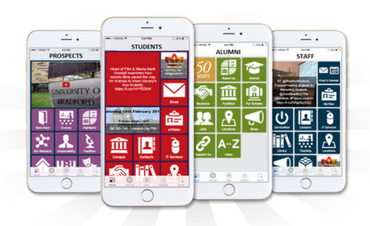Jackie Sherlock, Ex Libris
I’ve been working in mobile technology for almost six years, and that’s got me thinking about how my relationship with my phone has changed since 2014.
My phone is my entertainment, my bank, my shopping mall, my picture gallery and the way I stay in touch with people. When 72% students in a recent survey said that they “could not live without” their phone, I get it.
In an Education Technology article, Dr. David Parker from University of Hull wrote that “mobiles can’t be labelled ‘tool’ or ‘toy’ for many of our students. They are both those things and so much more, a technological linchpin impacting on all aspects of their lives. It is a completely natural progression for mobiles to be an integral part of their education.”
So what is it that makes this piece of technology the first thing we look at in the morning and the last thing we check at night?

If you can include these three features in your app, you are going to be staying on your students’ home screen for a long time to come.![]()
My appy place
A mobile phone is the most personal piece of equipment you own. It always fascinates me to see someone else’s device – you can tell a lot from a person from what they have on their home screen.
We (mostly) have the same access to apps, so what makes us choose the ones we have and their location on our phone?

This is my home screen. Apps for news, entertainment and work are all there. The more custom apps (I have one that controls the lights on my Christmas tree) don’t make it to the front page. The reason all these apps are on my home screen is because they are useful to me. They provide me with something I need.
That’s what makes apps so powerful. They do something for you. It may be as trivial as giving you five minutes of fun playing a game — or something as serious as providing on-demand mental health support.
Students and the “sticky” app
For students, apps help them negotiate university life. They can use a map to find their classes, access online learning and even track their attendance. The utility apps provide explains why an institutional app is seen as so vital to many students.
However, as much as we love our apps, human beings are fickle creatures. App retention rates are notoriously poor. An average app can lose 90% of daily users within a month and apps normally get deleted less than a week after they are last used.
So, what makes an app sticky?
1. First, it needs to be quick – I don’t want to sit waiting for things to load. I don’t have the time or patience for that.
2. It also needs to be easy. If I have to go through instructions or wade through tutorials to set something up, I’m going to uninstall straight away.
3. Perhaps above everything, though, is what I have already suggested. The app needs to do something for me – my apps need to know who I am and what I want.
Students want to be able to see their own timetable, update their records, and not be bombarded with general information about something that doesn’t relate to them.
If you can include these three features in your app, you are going to be staying on your students’ home screen for a long time to come.
The fundamental appeal of apps is behind the download of 200 billion of them in the past year alone. Apps offer all of us — and students in particular — more than a responsive website can.
Students want to use apps. Specifically, they want a single app for all aspects of their university life, which makes sense. They want everything in one place so they can make a seamless transition from one service to another.
They are used to living their lives on their phones, and they expect that to be where their university or college meets them.
Student life is hard enough. If you can make it easier by harnessing the connection they have with their phones, they’ll love you for it, and it could be the start of a long and beautiful relationship.
February 27, 2020






